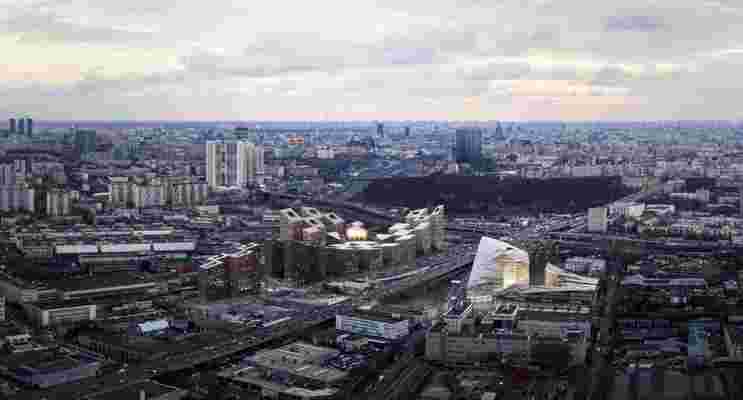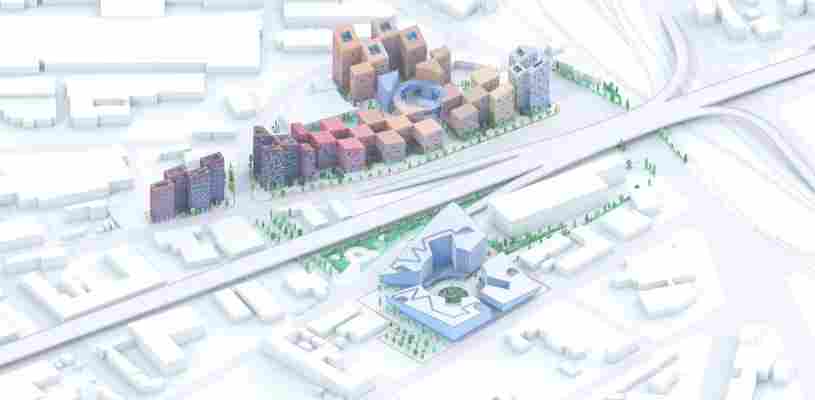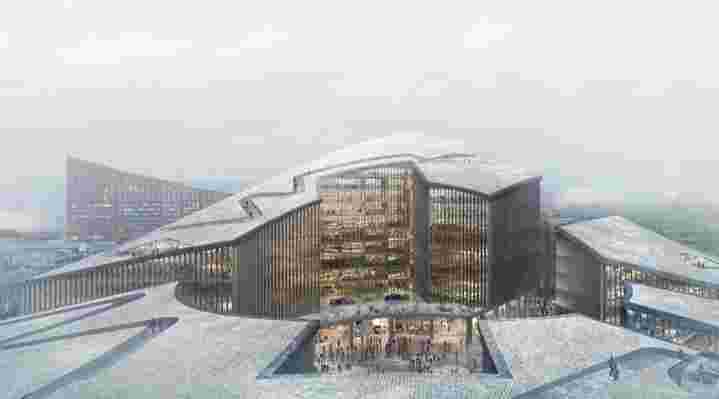ODA Wins Plan to Regenerate a Section of Moscow
It’s a happy new year indeed for New York–based architecture firm ODA, which has kicked off 2020 by winning an international competition to revitalize a 23-acre site in Moscow. A city of more than 12 million people—a number expected to grow in the coming years, even as Russia’s overall population declines—Moscow is maximizing its urban sprawl by developing former industrial sites on its outskirts for residential, commercial, and public use. As part of these new urbanization efforts, ODA has designed a striking master plan for Magistralnaya Ulitsa, or the MAZD Territory (as it’s also known), located within the west sector of the city’s Third Ring Road.
“Moscow’s center is predominantly dedicated to office, commerce, hospitality, cultural, and governmental buildings. Most people live around the second and third rings in large-scale formulated housing complexes, while industries are concentrated mostly along the third ring,” Eran Chen, founding principal of ODA, tells AD . “City life is a constant movement from the outer rings to the city center and back through systems of highways and public transport. MAZD is one of the city’s first attempts to creating a real mixed-used neighborhood in the outer rings. Its aim is to address the growing desire of millennials to live in a self-sustained, walkable neighborhood where the lines between live, work, and play are blurred.”

An aerial view shows how, while withdrawn from the core of Moscow, the revitalization plan will draw locals and tourists alike into an otherwise unused part of the city.
For the site, ODA has envisioned a unified plan defined by sprawling structure and a prominent roofline that mimics the topography of a hill, plus a series of towers whose forms extend the undulating silhouette of the complex. As a mixed-use project, MAZD will be home to a series of villa-like residences as well as condominiums, retail and dining experiences, urban green spaces, and offices, all interconnected with pedestrian walkways in a manner that blends landscape with architecture. “The master plan promotes the idea of connectivity and flexibility while formally creating a city-scale composition that forms a strong visual identity,” says Chen.

A rendering shows how the project will be divided by a preexisting strip of highway.
Designing such an immense project is not without its challenges. “There is very little relevant context in the immediate surrounding areas, and it was clear that our plan will impact the future development of a much greater territory. We had to expand our research far beyond the site to get a better understanding of the behavioral patterns, local cultural forces, and rising ambitions of the city’s urban plan,” says Chen. “It required us to ask more fundamental questions about what constitutes a neighborhood or a community and adapt to new terms, psychologies, and typologies that will guide the next half century of design.”

This rendering shows how every inch of space was considered when ODA looked to maximize the amount of walkable terrain, including (as the image articulates) paths along the rooftops of buildings.
But ODA is up to the task—the MAZD project is not the firm’s first foray into master planning: The firm has also contributed to urban design projects in New York, Mexico City, and Rotterdam (the Netherlands). Its goal is to redefine what a neighborhood means within the context of developing global cities with increasing densities, focusing on creating civic entities that engage its residents and visitors through activity.
The ultimate resource for design industry professionals, brought to you by the editors of Architectural Digest
“The authority of city planning to paint areas of our city maps in single colors has broken down, and a new system must be created. Mobility has become a major issue and infrastructure is rapidly collapsing. Within vertically growing neighborhoods, intimacy and a sense of community are diminishing,” says Chen. “Architecture must play a role in giving people a much-needed agency to determine their own experience, their own story, the ability to connect, to produce, to contribute to society, and to sustain themselves in a new way.”